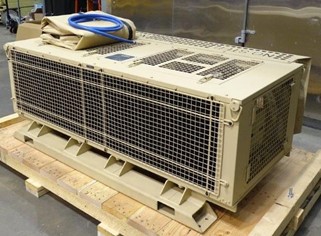- Solutions
- Services
- Industries
- Composites
- Resources
- About
- Shop
- Contact
- Solutions
- Services
- Industries
- Composites
- Resources
- About
- Shop
- Contact

Case Study
Development of ACT’s Tekgard® brand chiller began in 2011. The initial work, approximately ten years ago, resulted in the design and manufacture of qualification units and several proof of manufacture units.
Six years later, a production contract was placed for tens of units to replace chillers manufactured by another supplier. Shortly after production started, the build was halted.
ACT was contacted and - Field experience gained with the original units and the first generation Tekgard® units made clear the design was inadequate to provide the desired level of ruggedness and reliability required for the severity of the field conditions that the original units were designed for. The production program was paused and ACT engaged in a significant redesign and requalification effort to address the design shortcomings of the original units they had specified the production units from.
Read the full case study to learn how the ACT team overcame the challenges of designing to the most stringent of military requirements they had seen in over 20 years.
POWER ELECTRONICS ARE THE MOST CRITICAL COMPONENT TO A LARGE NUMBER OF APPLICATIONS...
Including power generation and operational equipment. Power Electronics module manufacturers invest millions of dollars to make these devices as efficient as possible, aiming primarily to reduce waste heat. However, even with efficiency gains at the module level, overall waste heat is rising across the industry due to more system and user-driven functional requirements. Increased system capability leads to higher power densities and more waste heat! Selecting off-the-shelf thermal solutions is no longer a viable option for applications that are pushing the envelope on power and operating efficiency.
Investing in an optimal thermal solution can be the design change with the largest payback potential in a high-power system. If properly designed, the thermal management system should not only meet performance requirements but do so while minimizing energy usage.
This eBook:

Copyright 2023. All rights reserved.